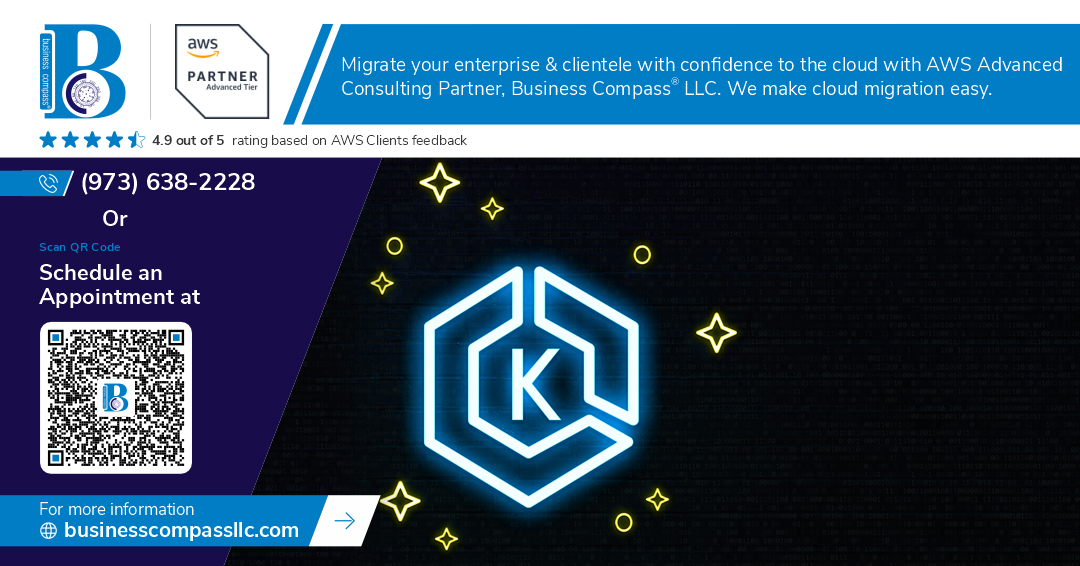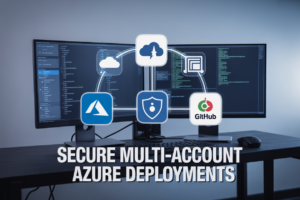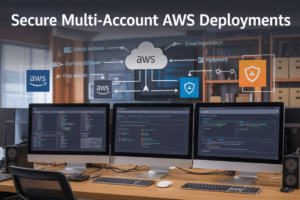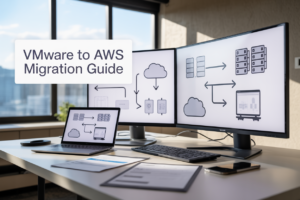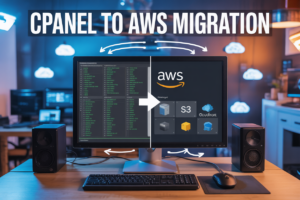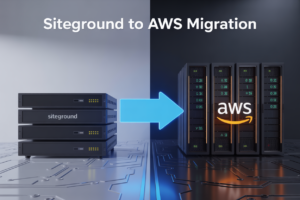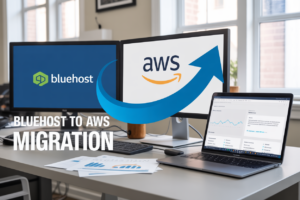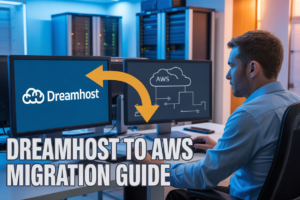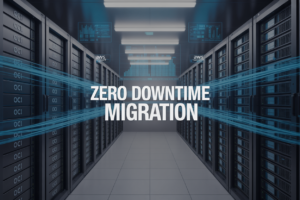Protecting your AWS EKS workloads against regional failures requires a solid cross-region backup strategy. AWS EKS cross-region backup using Kasten K10 gives you the safety net to recover quickly when disaster strikes your primary region.
This guide is for DevOps engineers, platform teams, and Kubernetes administrators who need to build reliable Kubernetes disaster recovery solutions across AWS regions. You’ll learn to protect mission-critical applications and meet business continuity requirements.
We’ll walk through setting up Kasten K10 infrastructure for multi-region operations, showing you how to configure the platform to work seamlessly across different AWS regions. You’ll also master configuring cross-region storage targets and backup policies, including the specific settings needed to automate protection for your most important workloads. Finally, we’ll cover executing cross-region restore operations so you can confidently recover your applications when needed.
Understanding Cross-Region Backup Requirements for EKS Workloads
Identifying critical data and application components requiring protection
When planning AWS EKS cross-region backup strategies, start by mapping your application architecture to identify stateful components that need protection. Persistent volumes, databases, configuration data, and application secrets represent your most valuable assets that require robust EKS backup and restore mechanisms. Stateless workloads like web servers or API gateways typically don’t need backup since they can be recreated from container images, but any custom configurations or mounted data still needs attention.
Create an inventory of your workloads based on criticality levels – mission-critical applications that directly impact revenue or customer experience should get priority treatment in your Kubernetes disaster recovery AWS planning. Consider data dependencies between services, as restoring individual components without their related data can lead to inconsistent application states. Document which persistent volume claims, config maps, and secrets each application depends on to ensure complete restoration capabilities.
Evaluating compliance and disaster recovery objectives
Your EKS disaster recovery strategy must align with specific Recovery Time Objectives (RTO) and Recovery Point Objectives (RPO) based on business requirements and regulatory mandates. Financial services might need sub-hour RTOs with minimal data loss, while development environments can tolerate longer recovery windows. Industry regulations like GDPR, HIPAA, or SOX often dictate minimum backup retention periods and geographic data residency requirements that directly impact your cross-region data protection Kubernetes approach.
Establish clear metrics for acceptable downtime and data loss scenarios. A critical e-commerce application might require 15-minute RPO and 1-hour RTO, driving the need for frequent automated backups and tested restoration procedures. Document compliance requirements for data encryption at rest and in transit, as cross-region transfers must maintain security standards throughout the backup and restore process.
Assessing network latency and bandwidth considerations for cross-region transfers
Kasten K10 multi-region setup performance heavily depends on network connectivity between source and target regions. Baseline your current network throughput and latency to understand realistic backup windows and transfer speeds. Large persistent volumes or frequent backup schedules can saturate available bandwidth, potentially impacting production workloads during backup operations.
Consider AWS Direct Connect or VPN connections for consistent, predictable network performance when implementing Kubernetes cross-region replication. Public internet transfers work but introduce variability in transfer speeds and potential security concerns. Calculate expected backup sizes and frequencies to determine if your network capacity can handle peak backup loads without affecting application performance.
Plan backup scheduling around network usage patterns – running large transfers during off-peak hours reduces impact on production traffic while taking advantage of potentially better network performance. Monitor bandwidth utilization trends to identify optimal backup windows and adjust your Kasten K10 backup policies accordingly for maximum efficiency and minimal application disruption.
Setting Up Kasten K10 Infrastructure for Multi-Region Operations
Installing Kasten K10 on primary EKS cluster
Deploy Kasten K10 on your primary EKS cluster using Helm charts to establish the core backup infrastructure. Create a dedicated namespace and configure RBAC permissions for seamless Kubernetes workload backup operations. Install the Kasten K10 operator with appropriate resource allocations based on your cluster size and expected backup volumes. Verify the installation by accessing the Kasten dashboard and confirming all pods are running correctly in the kasten-io namespace.
Configuring secondary region EKS cluster for restore operations
Set up your secondary EKS cluster in the target AWS region with matching Kubernetes versions and node configurations. Install Kasten K10 on the secondary cluster to enable cross-region restore capabilities for your EKS workload backup strategy. Configure cluster autoscaling and ensure adequate compute resources are available for potential disaster recovery scenarios. Validate network policies and security groups allow proper communication between Kasten components across both regions.
Establishing secure network connectivity between regions
Configure VPC peering or AWS Transit Gateway connections between your primary and secondary regions for secure data transfer during Kasten K10 multi-region setup operations. Implement proper routing tables and security groups to allow encrypted communication on required ports between Kasten instances. Set up AWS PrivateLink endpoints where possible to keep backup traffic within the AWS backbone network. Test connectivity using network debugging tools to ensure reliable cross-region data protection Kubernetes workflows.
Setting up cross-region storage repositories and access permissions
Create S3 buckets in both regions with cross-region replication enabled for your AWS EKS cross-region backup repository needs. Configure IAM roles and policies granting Kasten K10 appropriate permissions for bucket access, object lifecycle management, and encryption key usage. Set up AWS KMS keys in each region for encrypting backup data at rest and in transit. Establish bucket versioning and lifecycle policies to manage storage costs while maintaining recovery point objectives for your Kubernetes disaster recovery AWS implementation.
Configuring Cross-Region Storage Targets and Policies
Creating S3 buckets in target regions with proper encryption
Set up dedicated S3 buckets in your target AWS regions for Kasten K10 cross-region backup storage. Enable server-side encryption using AWS KMS with customer-managed keys to ensure data protection during transit and at rest. Configure versioning and MFA delete protection on these buckets to prevent accidental data loss. Apply bucket policies that restrict access to only your EKS clusters and Kasten K10 service accounts.
Establishing IAM roles and policies for cross-region access
Create IAM roles with cross-region permissions that allow Kasten K10 to read from source regions and write to target regions. Design policies following the principle of least privilege, granting only necessary S3 actions like GetObject, PutObject, and DeleteObject on specific bucket resources. Attach these roles to your EKS worker nodes or use IAM roles for service accounts (IRSA) to provide secure access without embedding credentials in your Kubernetes workloads.
Configuring Kasten K10 location profiles for remote storage
Define location profiles in Kasten K10 that point to your cross-region S3 buckets using the AWS S3 storage type. Specify the target region, bucket name, and appropriate IAM credentials in each profile configuration. Test connectivity between your EKS cluster and remote storage locations before implementing backup policies. Create separate profiles for different regions to enable flexible backup distribution strategies across multiple AWS regions.
Setting up retention policies for backup lifecycle management
Implement retention policies that automatically manage backup lifecycle across regions to optimize storage costs and compliance requirements. Configure different retention periods for various workload types – longer retention for critical applications and shorter periods for development environments. Set up S3 Intelligent Tiering or lifecycle rules to automatically transition older backups to cheaper storage classes like S3 Glacier or Deep Archive, reducing long-term storage expenses while maintaining data accessibility.
Creating Automated Backup Policies for Critical Workloads
Defining backup schedules based on recovery time objectives
Recovery time objectives (RTOs) drive your backup frequency decisions for AWS EKS workloads. Critical applications requiring sub-hour recovery need hourly Kasten K10 backup policies, while less critical workloads can use daily or weekly schedules. Database-heavy applications typically need more frequent snapshots – every 15-30 minutes – to minimize data loss. Configure backup windows during low-traffic periods to reduce performance impact. Your RTO requirements directly correlate with backup retention policies – shorter RTOs demand more frequent backups with extended retention periods.
Selecting applications and namespaces for protection
Application criticality determines which EKS namespaces receive Kasten K10 backup protection. Production databases, customer-facing services, and stateful applications get priority treatment with comprehensive backup policies. Use Kubernetes labels to group applications by business importance – tier-1 applications receive hourly backups while development environments get daily protection. Namespace selection should align with your disaster recovery strategy, focusing resources on revenue-generating workloads. Consider application dependencies when selecting protection scope to ensure complete restoration capabilities.
Configuring backup transformation and export policies
Backup transformation policies enable cross-region data protection by automatically exporting snapshots to remote AWS regions. Configure Kasten K10 export policies to push backups to S3 buckets in your target recovery region immediately after local backup completion. Set up data transformation rules to encrypt backups during transit and storage using AWS KMS keys. Export frequency should match your disaster recovery requirements – critical workloads need real-time export while others can use scheduled batch exports. Transformation policies also handle data compression and deduplication to optimize storage costs.
Setting up backup validation and verification processes
Automated backup validation ensures your AWS EKS backup and restore strategy actually works when disasters strike. Configure Kasten K10 to perform periodic restore tests in isolated environments, validating both data integrity and application functionality. Set up automated health checks that verify backup completeness, including persistent volumes, ConfigMaps, and secrets. Implement backup verification workflows that test cross-region restore operations monthly. Monitor backup validation metrics through CloudWatch dashboards and set up alerts for validation failures. Regular validation testing catches backup corruption early and builds confidence in your Kubernetes disaster recovery AWS capabilities.
Executing Cross-Region Restore Operations
Accessing backup catalogs from remote regions
Cross-region backup catalogs in Kasten K10 require proper authentication and network connectivity between your source and target EKS environments. Configure S3 bucket policies to allow access from both regions, ensuring IAM roles have cross-region permissions. Use Kasten’s catalog management features to browse remote backup repositories, verifying backup metadata and application snapshots are accessible before initiating restore operations.
Restoring applications to target EKS clusters
Start your EKS disaster recovery strategy by selecting the appropriate backup from remote catalogs and configuring restore parameters for the target cluster. Kasten K10 restore operations handle persistent volume restoration automatically, mapping storage classes between regions. Review application dependencies and ensure target cluster resources meet CPU, memory, and storage requirements. Configure network policies and ingress controllers to match your original environment specifications.
Validating data integrity and application functionality
Post-restore validation becomes critical for successful AWS EKS cross-region backup recovery. Run application health checks, database consistency tests, and functional verification scripts to confirm data integrity. Compare checksums between original and restored data sets, verify application logs for errors, and test critical user workflows. Monitor application performance metrics and resource consumption patterns to identify potential issues affecting restored workloads.
Managing namespace and resource conflicts during restore
Namespace conflicts commonly occur during Kasten K10 restore operations when target clusters contain existing resources with identical names. Pre-restore planning should include namespace mapping strategies and resource naming conventions. Use Kasten’s transformation policies to modify resource names, labels, and annotations during restoration. Handle RBAC conflicts by reviewing service accounts, roles, and cluster role bindings that might clash with restored configurations in your target environment.
Monitoring and Troubleshooting Cross-Region Backup Operations
Setting up alerts for backup failures and policy violations
Configure CloudWatch alarms and Kasten K10’s native alerting system to catch backup failures across regions before they impact your disaster recovery strategy. Set up email notifications for failed backup jobs, missed policy executions, and storage target connectivity issues. Create Slack or PagerDuty integrations for critical workloads that need immediate attention when cross-region transfers fail. Monitor backup policy violations like retention period breaches or unauthorized restore attempts through custom webhooks that trigger automated incident response workflows.
Monitoring cross-region transfer performance and costs
Track data transfer metrics using CloudWatch to identify bottlenecks in your AWS EKS cross-region backup operations. Monitor bandwidth utilization, transfer completion times, and failure rates across different AWS regions to optimize your Kasten K10 backup policies. Set up cost alerts for unexpected spikes in cross-region data transfer charges, especially when backing up large persistent volumes. Use AWS Cost Explorer to analyze trends in backup storage costs and implement lifecycle policies that automatically transition older backups to cheaper storage classes like S3 Glacier.
Diagnosing common connectivity and permission issues
Troubleshoot IAM role misconfigurations that prevent Kasten K10 from accessing cross-region S3 buckets by verifying trust relationships and policy attachments. Check VPC endpoints and security group rules when backup jobs fail to connect to remote storage targets. Validate AWS credentials rotation schedules to prevent authentication failures during automated backup windows. Debug network connectivity issues by testing cross-region access from your EKS nodes using AWS CLI commands, and ensure proper DNS resolution for S3 endpoints in target regions.
Cross-region backup and restore capabilities are no longer optional for production EKS workloads—they’re essential. Kasten K10 provides the tools you need to protect your applications across multiple AWS regions, from setting up the infrastructure to creating automated policies that keep your data safe. The ability to quickly restore workloads in different regions can mean the difference between minimal downtime and catastrophic data loss.
Getting started with cross-region backups might seem complex, but breaking it down into manageable steps makes the process straightforward. Focus on properly configuring your storage targets first, then build out your backup policies to match your business requirements. Regular monitoring will help you catch issues early and ensure your backup strategy actually works when you need it most. Don’t wait for a disaster to test your restore procedures—practice them regularly so your team knows exactly what to do when every minute counts.










